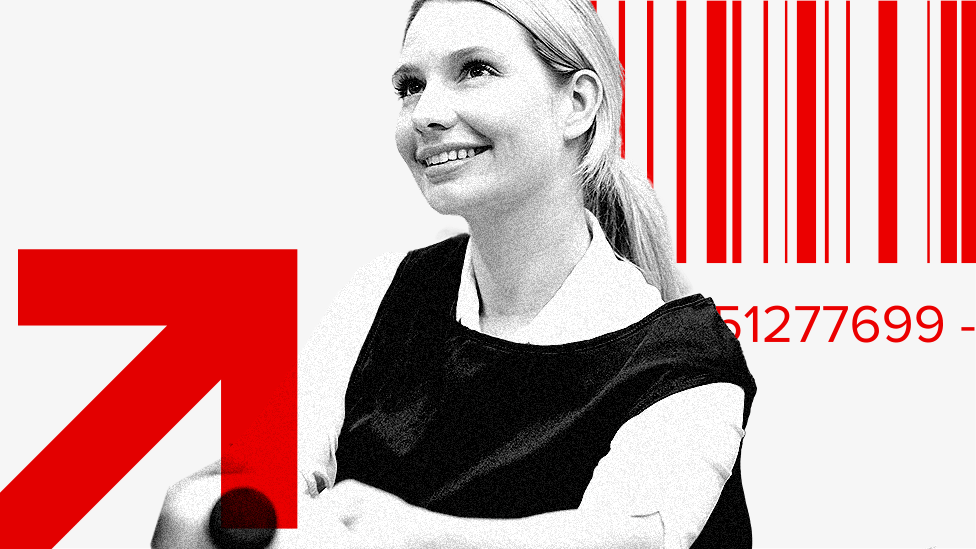What are the National Minimum Wage, National Living Wage and Real Living Wage?
- Published

Millions of workers across the UK have received a pay increased after the National Minimum Wage and National Living Wage rose on 1 April.
The Real Living Wage - a higher amount voluntarily paid by some UK businesses - remains the same.
What is the National Living Wage and how much is it?
From 1 April, employees aged 21 and over became entitled to the National Living Wage. Previously, you had to be 23 to qualify.
The rate increased to £11.44 an hour, up from £10.42.
The changes, which apply across the UK, mean:
- A full-time adult worker paid the minimum wage will receive a pay rise worth £1,800 a year
- A 21-year-old, who moves from the lower minimum wage rate to the main rate, will get a £2,300 rise
What is the National Minimum Wage and how much is it?
Younger employees - aged between 16 and 20 - receive the National Minimum Wage.
The rates for this also increased on 1 April:
- If you are 16 or 17, the National Minimum Wage is £6.40 an hour, up from £5.28
- If you are 18, 19 or 20, the National Minimum Wage is £8.60, up from £7.49
The separate apprentice rate, which applies to eligible people under 19 - or those over 19 in the first year of an apprenticeship - will be £6.40 an hour, up from £5.28.
The National Living Wage and National Minimum Wage are both set by the Department for Business and Trade every year on the advice of independent group, the Low Pay Commission.
Who can't get the National Minimum Wage or National Living Wage?
Those who don't qualify include:
- self-employed
- company directors
- volunteers
- members of the armed forces
- people living and working in a religious community
- prisoners
People with disabilities or in long-term unemployment who take part in government work programmes are paid fixed amounts at different stages of the scheme.
These are less than the equivalent National Minimum or Living rate.
Do employers have to pay the National Minimum Wage and National Living Wage?
Yes, it is a criminal offence if employers fail to pay the correct National Minimum and Living Wages to their workers.
The rates apply to staff even if they are not paid by the hour.
If you think you are being paid incorrectly, you can complain via the HMRC website.
You can also get advice from workplace experts Acas.
What happens if employers don't pay the right National Minimum Wage or National Living Wage?
Any employer not paying the correct amount can be fined by HMRC.
In June 2023, the government said that more than 200 firms had been fined a total of nearly £7m and told to reimburse 63,000 workers for failures over several years.
The companies included Marks and Spencer, Argos and Lloyds Pharmacy.
WH Smith was the worst offender, having failed to pay more than £1m to more than 17,600 workers.
What is the Real Living Wage and how much is it?
The Real Living Wage is an unofficial hourly rate which is overseen by the Living Wage Foundation charity. It is based on the amount the charity believes people need to earn.
It is aimed at UK workers aged 18 and over, but is not a legal requirement, and businesses choose whether to pay it.
The charity says more than 460,000 employees working for 14,000 firms currently receive the Real Living Wage.
The rate for workers in London - sometimes called the London Living Wage - is £13.15 an hour.
In the rest of the UK, it is £12.
A qualifying full-time worker in London would earn £5,323 more than someone on the National Living Wage.
Someone on the Real Living Wage outside the capital would earn £3,081 more than someone on the National Living Wage.
The charity points out that - unlike the National Minimum Wage - the Real Living Wage has kept up with the rising cost of living.
The CPI measure of inflation rose by 17.4% between September 2021 and September 2023. Over the same period the Real Living Wage for the UK went up by 21.2% (19% in London).
By comparison, the National Minimum Wage increased by less than CPI between April 2021 and April 2023.
In February 2024, the charity said it had found that one in eight UK jobs paid less than its suggested hourly rate, with the highest concentration of low-paid jobs in the north-east of England (15.9%), the East Midlands (15.7%) and Northern Ireland (15.6%).
When were the National Minimum Wage and National Living Wage introduced?
The National Minimum Wage came into force under the Labour government in 1999.
It started at £3.60 an hour for those 22 and older, and £3 for 18-21-year-olds.
The Conservative government introduced the National Living Wage for workers aged over 25 in 2016.
It was initially set at £7.20 an hour - 50p more than the National Minimum Wage. The qualifying age fell to 23 in 2021.